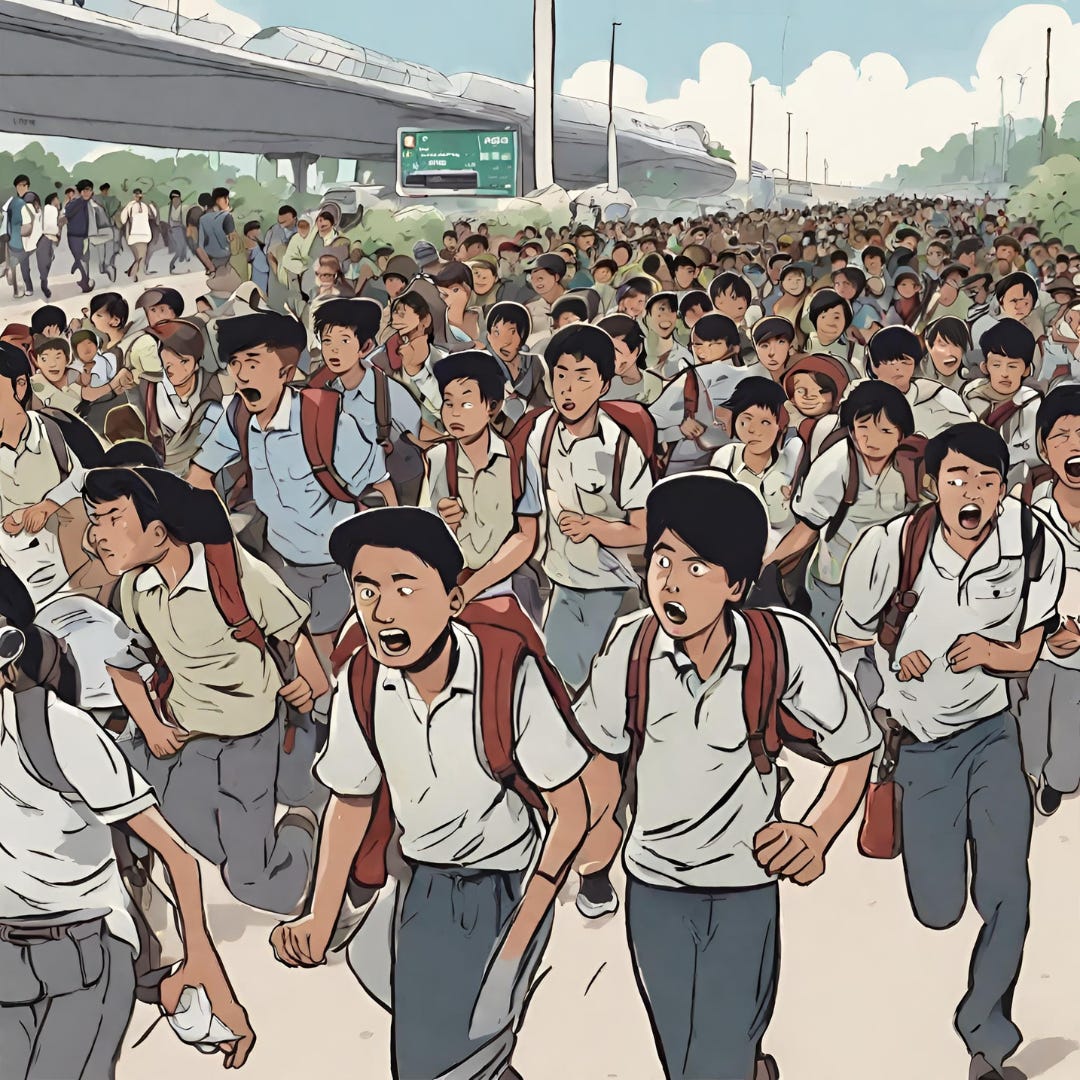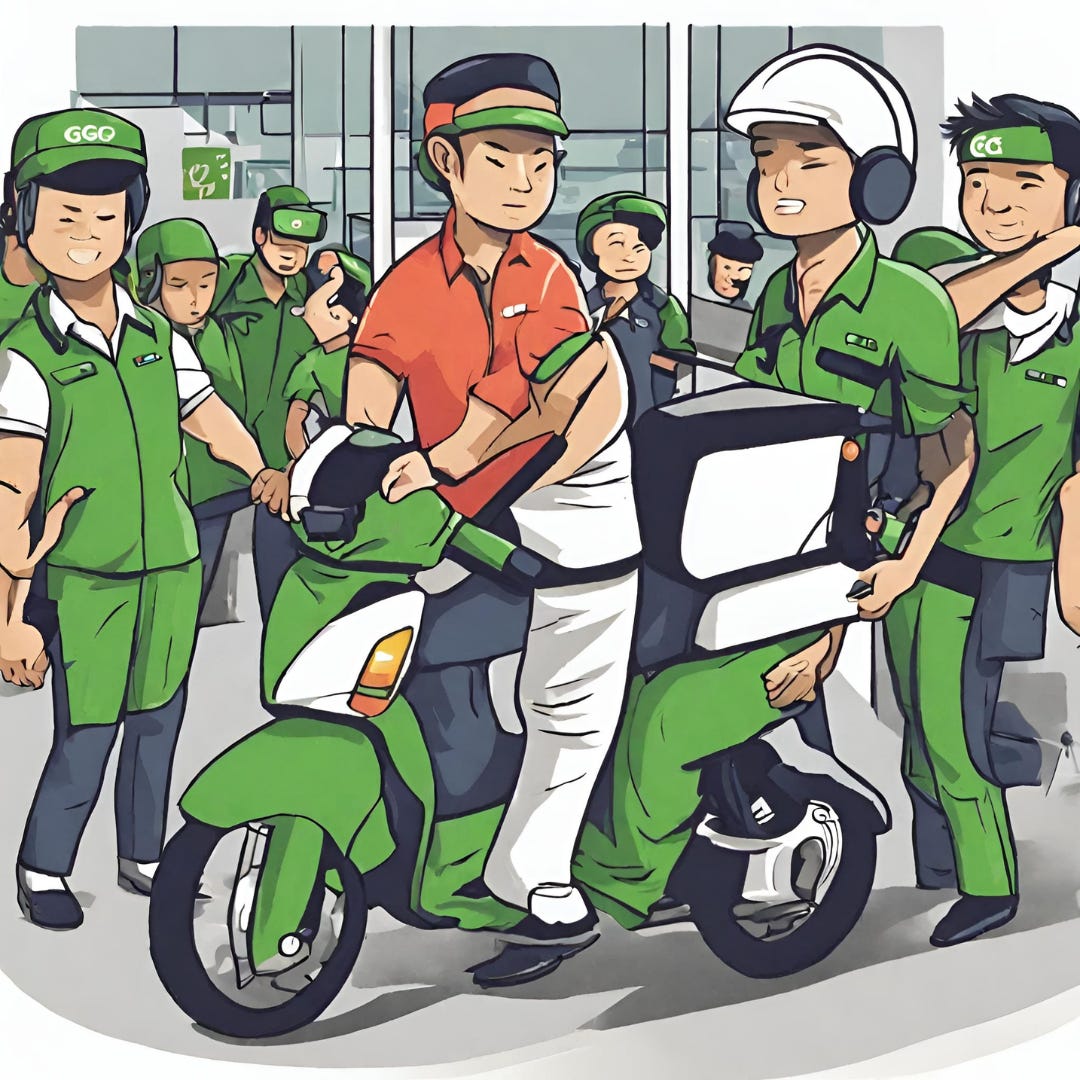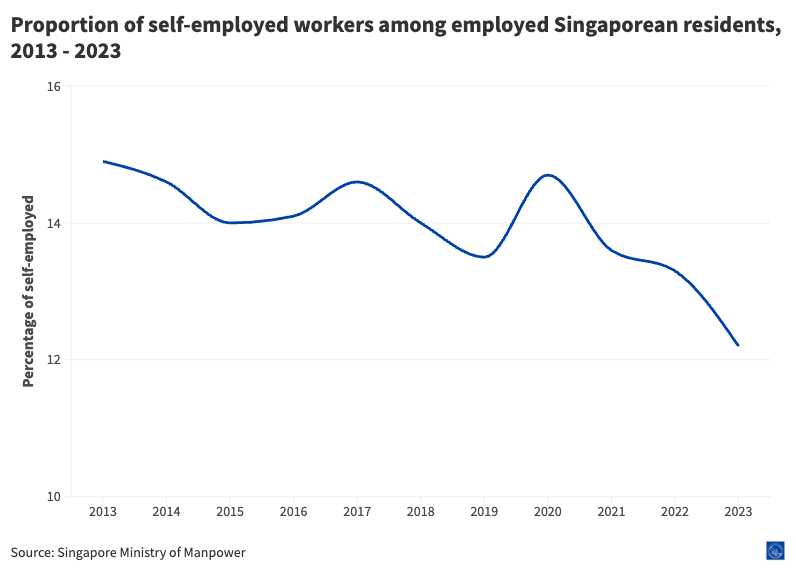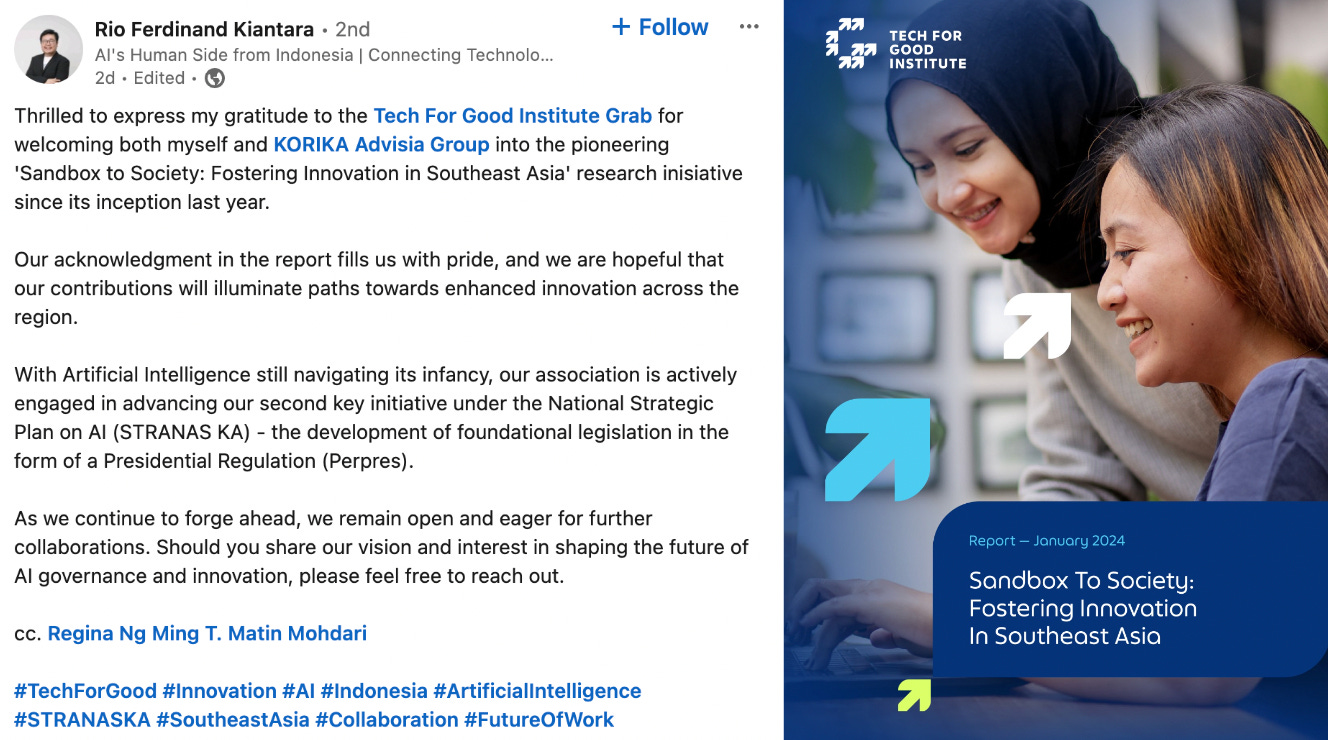#8: Threatened livelihoods and protecting workers
Myanmar's junta suspends foreign job offers for Burmese with conscription for youths, while more Singapore firms adopts a guideline to protect the self-employed.
Welcome to this week’s edition of SEAmplified! Your latest insights on Southeast Asian politics in 7.8 minutes.
⌛This week in brief:
📌 Myanmar's junta preventing Burmese from heading abroad for work with conscription law
📌 More Singapore firms adopts guideline specifying the rights of self-employed workers📅 Explainer of the week
Migrant workers: Myanmar’s conscription law dashes hopes for foreign jobs
📌 The Myanmar junta suspended foreign employment and introduced compulsory military service for youths.
📌 Millions of Burmese have left for job opportunities abroad since the 2021 coup, but the junta has imposed restrictions against them, such as shutting passport offices.
📌 Foreign companies are facing difficulties in hiring Burmese workers, and the new law is triggering a fresh exodus of youths and more crises for the junta.What’s going on here?
On February 13, Myanmar’s junta ordered employment agencies to stop accepting foreign employment offers for Burmese who intend to work overseas.
This comes as the junta activated compulsory military service, requiring all men aged 18 to 35 and women aged 18 to 27 to serve the military for two to five years.
What does this mean?
It is common for Burmese to seek jobs overseas, due to recurring political and economic hardships.
Before the 2021 coup, the number of Burmese seeking foreign job opportunities grew from 18,000 in 2011 to a peak of 238,000 in 2018 and 2019.
A 2019 survey found that one-fifth and one-third of households in Ayeyarwady and Mandalay regions have a family member who is currently a migrant.
Since the coup, recurring conflicts have forced close to 2 million Burmese to leave their homes or flee abroad for jobs. About 10% of Myanmar’s labor force works overseas, of which 70% are working in Thailand, with the remainder in countries like Malaysia and Singapore.
As of 2023, Thailand records about 1.9 million migrants from Myanmar, which makes up 75% of migrants from Myanmar, Cambodia, and Laos.
The large number of Burmese workers in Thailand is facilitated by an agreement between both countries since 2003. They work primarily in the agriculture, hospitality, and fishing industries.
The conscription law adds to restrictions against migrant workers.
Passport offices are closed, and a need for an overseas worker identification card has made it challenging for Burmese people to travel abroad for work.
Since late 2023, Burmese migrants are required to remit 25% of their monthly salary home through the junta’s banking system and pay taxes in the foreign currency they earn.
Why should I care?
Personally: Increased difficulty in hiring Burmese migrant workers
Since 2021, foreign companies have reported obstacles in hiring Burmese workers due to restrictions imposed by the junta.
In Singapore, construction firms must process additional paperwork, such as signing a power of attorney letter. Employment agencies are unsure if the Burmese can travel to the city-state for work due to restrictions on leaving Myanmar.
With the junta suspending foreign employment, additional difficulties are expected in the hiring process.
The bigger picture: Fresh rounds of exodus; More crises for the junta?
The new conscription law is triggering a fresh exodus of Burmese youths.
After the announcement, about 1,000 to 2,000 people queued at the Thai embassy in Yangon for visas to leave Myanmar, as compared to less than 100 previously.
Youths have expressed their desire to either escape or join the resistance forces.
By restricting overseas employment, the junta is shutting off an important financial source when it is struggling.
Before the coup, overseas remittance into Myanmar increased from US$1.64 billion in 2013 to US$2.67 billion in 2020. It has declined to US$1.9 billion in 2022.
The junta could earn millions of Thai bahts if Burmese workers in Thailand comply with the 25% remittance requirement.
In 2023, the central bank gave up its fixed exchange rate policy, causing a fuel crisis as it was unable to sell US dollars to buy fuel.
Additional crises will compound challenges for the junta currently facing its toughest ordeal. The civil war has escalated, and more people are defying its rule.
In October 2023, The Brotherhood Alliance (TBA), which consists of ethnic armed groups, began attacking the junta in northern Myanmar, to eradicate them and online scam syndicates.
Recently, the Arakan Army (part of TBA) increased its attacks on junta targets in Rakhine. The junta defied a China-brokered ceasefire by launching attacks in Shan and Mandalay.
Youths are planning to escape or join resistance forces, while the trade union denounced the conscription law as forced labor and an attack on youths and regime protestors.
📅 Explainer of the week
Gig economy: Singapore sees an uptick in companies adopting fair hiring practices for self-employed workers
📌 There is an increase in the number of companies adopting a fair hiring guideline for self-employed workers in Singapore.
📌 The guideline requires companies to be clear on their expectations of self-employed workers and payment.
📌 The agreement is part of Singapore’s efforts to introduce more protection for self-employed workers, but barriers exist in other Southeast Asian countries.What’s going on here?
More Singapore companies are adopting guidelines for the hiring of self-employed workers, from 470 in March 2018, to more than 2,600 in February 2024.
The guidelines specify fair employment practices, requiring companies to be transparent in their payments and expectations of self-employed workers.
What does this mean?
Singapore has a consistent proportion of self-employed workers at about 13 to 14% of the workforce from 2013 to 2022.
Self-employed workers include those who operate their own businesses, assist in the operation of family businesses, and people who are unable to find work.
As of 2022, private-hire car drivers on ride-hailing platforms and taxi drivers make up a large portion of Singapore’s gig economy with about 30,800 and 23,100 workers respectively.
Concerns were raised by critics and workers on their welfare as self-employed workers.
There were recurring concerns about the lack of medical and accident insurance coverage for self-employed workers like delivery riders who are often exposed to external elements like the weather.
Some workers faced delayed or inaccurate payments due to unclear conditions set by the hiring company initially.
To address these concerns, the Singapore government worked with the national trade union and the Singapore National Employers Federation to come up with a set of tripartite standards.
Companies would need to stipulate the obligations that they expect from self-employed workers, such as duration and work location.
Companies are expected to be transparent on payment to workers.
Why should I care?
Personally: More protection for self-employed workers
Flexibility of time and an alternative income stream are some of the upsides of freelancing. However, it is not a bed of roses.
Self-employed workers are the most financially stretched group in Singapore. They tap into their savings to cover spending needs when they only have enough to cover 1.7 months of expenses.
Another survey lists inflation and rising costs of daily expenses and healthcare as top financial concerns for the self-employed, and that 9 in 10 workers have inadequate planning for retirement.
There was also a decline in the proportion of self-employed workers in Singapore, from 14.7% in 2020 to 12.2% in 2023.
An increase in job offerings and a shift in workers’ preference for greater job stability amid economic uncertainties are reasons behind the decline.
The tripartite guideline is part of several safeguards that the government is implementing for self-employed workers.
From the latter half of 2024, companies that hire self-employed workers will need to provide standardized insurance protection, while gig workers aged 30 and below will need to contribute to their Central Provident Fund (CPF) account, a retirement savings scheme in Singapore.
The bigger picture: Protecting self-employed workers across ASEAN
ASEAN estimates that about 244 million people in the region are self-employed. Apart from Singapore, there are varying proportions of self-employed workers across the region, from 9.1% of the working population in Brunei to 78% in Laos.
However, a 2020 report highlighted several barriers in ASEAN countries’ efforts to implement protection policies for self-employed workers.
Legal: Sectors like agriculture and migrant workers are often excluded from protection by law.
Financial: Self-employed persons with low income face difficulties contributing to social insurance schemes.
Bureaucratic: Complex administrative processes have increased the opportunity cost for self-employed persons, which impedes their ability to receive help.
Some countries may already have protection rules, but others are lacking.
In Malaysia, the government is working on improving a social security scheme for self-employed persons by widening coverage for unforeseen circumstances.
In Indonesia, self-employed workers are considered “partners” of a company and are not entitled to protection under the employment law. Current regulations focus on ride-hailing workers’ responsibility to provide safe and secure service.
Community feature
A surge in digital innovation has introduced new risks and challenges for regulators in Southeast Asia.
In a LinkedIn post, Rio Ferdinand Kiantara, Group CEO of Advisa Group shared a report from Tech For Good Institute, which suggests that regulatory sandboxes serve as an indispensable instrument for governments to mitigate risks and stimulate innovation.
Sandboxes are an instrument for regulators to allow new technologies to flourish in a controlled environment, which avoids stifling innovations through overregulation. A greater adoption of the sandbox approach will create more room for high-tech companies to develop in the region, creating more employment in the digital economy.
Learn more about how regulatory sandboxes are deployed in Southeast Asia from the Tech For Good Institute report here.
News Roundup
Indonesia and Singapore have taken a significant step towards environmental cooperation with an agreement to jointly pursue carbon capture and storage (CCS) for power generation.
Indonesia's Jakarta Composite Index surged 1.3% as investor confidence grew on expectations of a clear Prabowo win.
Singapore holds firm on 2024 growth prediction of 1-3%, despite 1.1% growth in 2023, alongside external risks like geopolitical tensions and monetary policy shifts.
Thailand implements a work-from-home policy for Bangkok employees as PM2.5 pollution surges, affecting over 60,000 people amid severe air quality concerns.
Vietnam's coffee export value doubled in January, hitting US$623 million, with volumes up by 61.6%, as traders actively purchased coffee before the Tet holiday.







